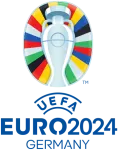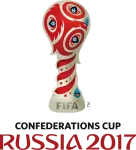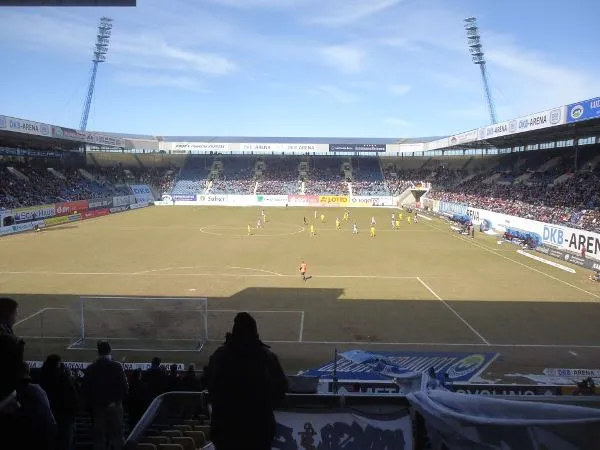- BETTING TIPS
- BETTING TIPS NAVIGATIONS
 Premier League
Premier League FA Cup
FA Cup League Cup
League Cup La Liga
La Liga Copa del Rey
Copa del Rey Super Cup
Super Cup Champions League
Champions League Europa League
Europa League Europa Conference League
Europa Conference League World Cup
World Cup Euro Championship
Euro Championship Nations League
Nations League Africa Cup of Nations
Africa Cup of Nations Copa America
Copa America International Friendly
International Friendly Confederations Cup
Confederations Cup Serie A
Serie A Coppa Italia
Coppa Italia Super Cup
Super Cup Bundesliga
Bundesliga Ligue 1
Ligue 1 DFB Pokal
DFB Pokal Super Cup
Super Cup Malaysia Super League
Malaysia Super League Coupe de France
Coupe de France Trophée des Champions
Trophée des Champions Pro League
Pro League
- Teams
- TEAMS NAVIGATIONS
 Premier League
Premier League FA Cup
FA Cup League Cup
League Cup La Liga
La Liga Copa del Rey
Copa del Rey Super Cup
Super Cup Champions League
Champions League Europa League
Europa League Europa Conference League
Europa Conference League World Cup
World Cup Euro Championship
Euro Championship Nations League
Nations League Africa Cup of Nations
Africa Cup of Nations Copa America
Copa America International Friendly
International Friendly Confederations Cup
Confederations Cup Serie A
Serie A Coppa Italia
Coppa Italia Super Cup
Super Cup Bundesliga
Bundesliga Ligue 1
Ligue 1 DFB Pokal
DFB Pokal Super Cup
Super Cup Malaysia Super League
Malaysia Super League Coupe de France
Coupe de France Trophée des Champions
Trophée des Champions Pro League
Pro League
- Fixtures & Results
- Fixtures & Results NAVIGATIONS
 Premier League
Premier League FA Cup
FA Cup League Cup
League Cup La Liga
La Liga Copa del Rey
Copa del Rey Super Cup
Super Cup Champions League
Champions League Europa League
Europa League Europa Conference League
Europa Conference League World Cup
World Cup Euro Championship
Euro Championship Nations League
Nations League Africa Cup of Nations
Africa Cup of Nations Copa America
Copa America International Friendly
International Friendly Confederations Cup
Confederations Cup Serie A
Serie A Coppa Italia
Coppa Italia Super Cup
Super Cup Bundesliga
Bundesliga Ligue 1
Ligue 1 DFB Pokal
DFB Pokal Super Cup
Super Cup Malaysia Super League
Malaysia Super League Coupe de France
Coupe de France Trophée des Champions
Trophée des Champions Pro League
Pro League
- Tables
- Tables NAVIGATIONS
 Premier League
Premier League FA Cup
FA Cup League Cup
League Cup La Liga
La Liga Copa del Rey
Copa del Rey Super Cup
Super Cup Champions League
Champions League Europa League
Europa League Europa Conference League
Europa Conference League World Cup
World Cup Euro Championship
Euro Championship Nations League
Nations League Africa Cup of Nations
Africa Cup of Nations Copa America
Copa America International Friendly
International Friendly Confederations Cup
Confederations Cup Serie A
Serie A Coppa Italia
Coppa Italia Super Cup
Super Cup Bundesliga
Bundesliga Ligue 1
Ligue 1 DFB Pokal
DFB Pokal Super Cup
Super Cup Malaysia Super League
Malaysia Super League Coupe de France
Coupe de France Trophée des Champions
Trophée des Champions Pro League
Pro League
- News
- News NAVIGATIONS
 Premier League
Premier League FA Cup
FA Cup League Cup
League Cup La Liga
La Liga Copa del Rey
Copa del Rey Super Cup
Super Cup Champions League
Champions League Europa League
Europa League Europa Conference League
Europa Conference League World Cup
World Cup Euro Championship
Euro Championship Nations League
Nations League Africa Cup of Nations
Africa Cup of Nations Copa America
Copa America International Friendly
International Friendly Confederations Cup
Confederations Cup Serie A
Serie A Coppa Italia
Coppa Italia Super Cup
Super Cup Bundesliga
Bundesliga Ligue 1
Ligue 1 DFB Pokal
DFB Pokal Super Cup
Super Cup Malaysia Super League
Malaysia Super League Coupe de France
Coupe de France Trophée des Champions
Trophée des Champions Pro League
Pro League
- Live ScoresLive
Hansa Rostock
GermanyVenue

Ostseestadion
| City | : | Rostock |
| Capacity | : | 29,000 |
| Surface | : | Grass |
Hansa Rostock FC, founded in 1965, is one of the most iconic football clubs in Germany. Based in the northern city of Rostock, the club has a rich history and has contributed significantly to the landscape of German football. Known for its passionate fanbase and competitive spirit, Hansa Rostock is a team that represents the pride of the Hanseatic region. The club has experienced a mix of highs and lows throughout its history, but it has always remained a strong force within German football, particularly in the country's lower divisions.
The Early History of Hansa Rostock
Hansa Rostock was originally formed as the football department of the local sports club in Rostock, which was known as "Hansa Rostock." The club's early years saw it playing in the lower divisions of German football under the former East Germany's system. Despite the political and social difficulties of the time, the team quickly rose through the ranks.
In the 1970s and 1980s, Hansa Rostock became one of the more notable clubs in East Germany. The team’s performance in the DDR-Oberliga, the top tier of East German football, cemented their place as a respected club in the country. Their rise to prominence was marked by strong performances and a growing fanbase.
Match Predictions
- Pickering Town vs. Easington Colliery Predictions & Betting Tips on Aug 16 - 02:45 AM
- Atherton Collieries vs. Prestwich Heys Predictions & Betting Tips on Aug 16 - 02:45 AM
- Christchurch vs. Tadley Calleva Predictions & Betting Tips on Aug 16 - 02:45 AM
- Epsom & Ewell FC vs. South Park Predictions & Betting Tips on Aug 16 - 02:45 AM
- Lye Town vs. Racing Club Warwick Predictions & Betting Tips on Aug 16 - 02:45 AM
Hansa Rostock's Success in the DDR-Oberliga
During the 1970s and 1980s, Hansa Rostock became one of the most successful football teams in East Germany. They won multiple regional titles and participated regularly in European competitions, though they were often overshadowed by more prominent East German teams like Dynamo Dresden and 1. FC Magdeburg. Nonetheless, Hansa Rostock’s consistent performances helped raise the club’s profile and solidify its legacy within East German football.
One of the club’s crowning achievements during this period was its ability to challenge for top spots in the DDR-Oberliga, frequently finishing in the upper echelons of the league standings. This success allowed them to participate in international competitions like the European Cup and Cup Winners' Cup, making them a well-known name in East Germany and beyond.
Transition to the Bundesliga After German Reunification
The fall of the Berlin Wall in 1989 and the reunification of Germany in the early 1990s were pivotal moments for Hansa Rostock. The reunification brought about a restructuring of German football, and clubs from the former East Germany were integrated into the Bundesliga and other top divisions.
Hansa Rostock found themselves in the Bundesliga for the first time in the 1991-92 season. Their transition to the top tier of German football was challenging, but it marked a significant achievement for the club. They managed to stay in the Bundesliga for several seasons and became a team to watch in German football, even though their stay in the top league was brief.
Hansa Rostock's Time in the 2. Bundesliga
After relegation from the Bundesliga, Hansa Rostock became a mainstay in the 2. Bundesliga, where they played for much of the 1990s and early 2000s. This period proved to be one of stability for the club, as they consistently competed in Germany’s second division.
Hansa Rostock developed a reputation for being a tough, resilient team, known for their strong defense and efficient counter-attacking play. During this time, they also developed a solid fanbase that supported them through thick and thin, helping to fuel the club’s identity.
In the mid-2000s, Hansa Rostock was promoted back to the Bundesliga, but their time at the top level was short-lived. Despite the club’s financial challenges and competition from wealthier Bundesliga teams, Hansa Rostock continued to maintain a strong presence in German football.
Key Players in Hansa Rostock's History
Over the years, Hansa Rostock has had a number of notable players who have left their mark on the club. Some of these players went on to enjoy successful careers in higher divisions, while others became beloved figures in Rostock’s footballing history.
- Andreas Reinke: A goalkeeper who was a key figure in Hansa Rostock’s success during their Bundesliga years. Reinke’s leadership and consistency were vital for the club’s performances during his time.
- Timo Lange: A midfielder known for his skill and vision, Lange was instrumental in the club's rise to the Bundesliga.
- Ronny Nikol: A versatile player who enjoyed a long and productive career with Hansa Rostock, Nikol became an iconic figure at the club.
- Rüdiger Abramczik: A talented attacker who played for Hansa Rostock in the late 1980s and early 1990s, contributing significantly to the club’s attack.
These players, among others, helped shape the club’s legacy and build the foundation for its future successes.
Rivalries and Competitions
Hansa Rostock has a number of intense regional rivalries that have added spice to their matches over the years. The most notable rivalries include:
- Hansa Rostock vs. Dynamo Dresden: A rivalry that has its roots in the former East Germany. Matches between these two clubs are always fiercely contested, with both sets of fans bringing immense passion to the stadium.
- Hansa Rostock vs. 1. FC Magdeburg: Another major rivalry in East German football, these encounters are marked by high stakes and intense fan atmospheres.
- Hansa Rostock vs. St. Pauli: This rivalry has grown in recent years, with both clubs having strong, vocal fanbases and a similar working-class ethos.
These rivalries have provided some of the most memorable moments in Hansa Rostock’s history, adding to the club’s rich tradition in German football.
The Club's Fanbase and Supporters
Hansa Rostock’s fanbase is known for its passion, loyalty, and unwavering support for the club. The fans, known as the “Kogge,” are deeply connected to the team, often creating an electric atmosphere at the Ostseestadion, the club's home ground.
The supporters are known for their vibrant displays, including large banners, flags, and choreographed chants. Hansa Rostock’s fans have developed a strong sense of community around the club, and they are committed to the team regardless of its position in the league.
The club's supporters have been instrumental in the team’s success, helping drive the players forward during tough times. The strong relationship between the team and its fans is one of the defining characteristics of the club.
Hansa Rostock in the Modern Era
In recent years, Hansa Rostock has been working towards returning to the Bundesliga, with the goal of re-establishing itself as a top-tier club. After some time in the 2. Bundesliga and 3. Liga, the club has shown resilience and ambition to get back to the Bundesliga.
Hansa Rostock’s modern squad is built around a mix of experienced players and young talent. The team plays a dynamic and exciting style of football, focusing on aggressive pressing and attacking play. The club is also focusing on developing young talent through its academy to ensure long-term success.
The Ostseestadion: Hansa Rostock's Home Ground
The Ostseestadion is the proud home of Hansa Rostock. Located in the city of Rostock, the stadium has been a fortress for the club for many years. With a capacity of over 29,000, it provides an intimate and vibrant atmosphere for home matches.
The Ostseestadion is known for its passionate crowd, with fans often filling the stands and creating an electric atmosphere on matchdays. The stadium’s design reflects the club’s deep connection to the community, and it remains one of the most iconic venues in German football.
The Future of Hansa Rostock FC
Looking ahead, Hansa Rostock is focused on its future success. With a strong foundation and a dedicated fanbase, the club is working to solidify its place back in the Bundesliga. The club is also committed to investing in youth development and building a competitive squad capable of achieving long-term goals.
Hansa Rostock’s future is bright, and with continued support from their loyal fans, the club hopes to return to its former glory and become a key player in German football once again.
Conclusion: A Proud Club with a Rich Legacy
Hansa Rostock FC has a storied history, a passionate fanbase, and a bright future ahead. From its early years in East German football to its current efforts to return to the Bundesliga, the club has always been a symbol of resilience and determination. The connection between the team and its supporters is one of the strongest in German football, and it will continue to propel the club forward. As they strive for further success, Hansa Rostock remains a club with a proud legacy and an exciting future in German football.
News & Updates


